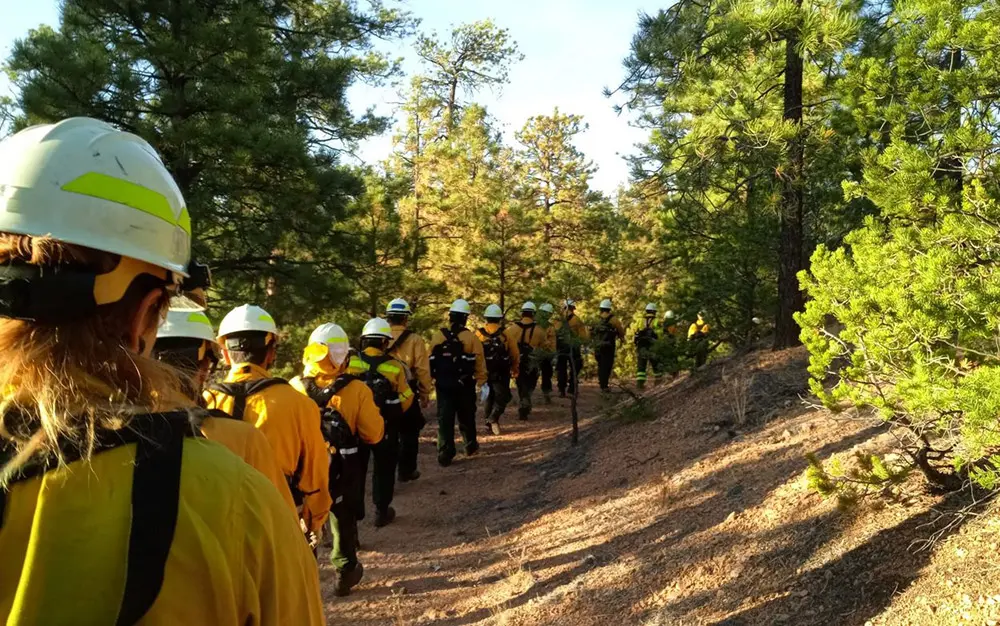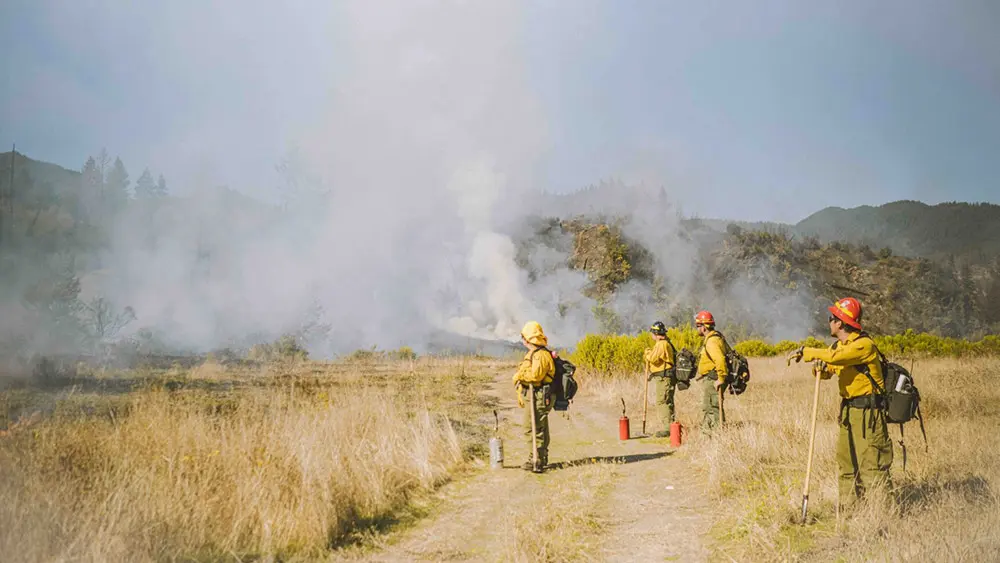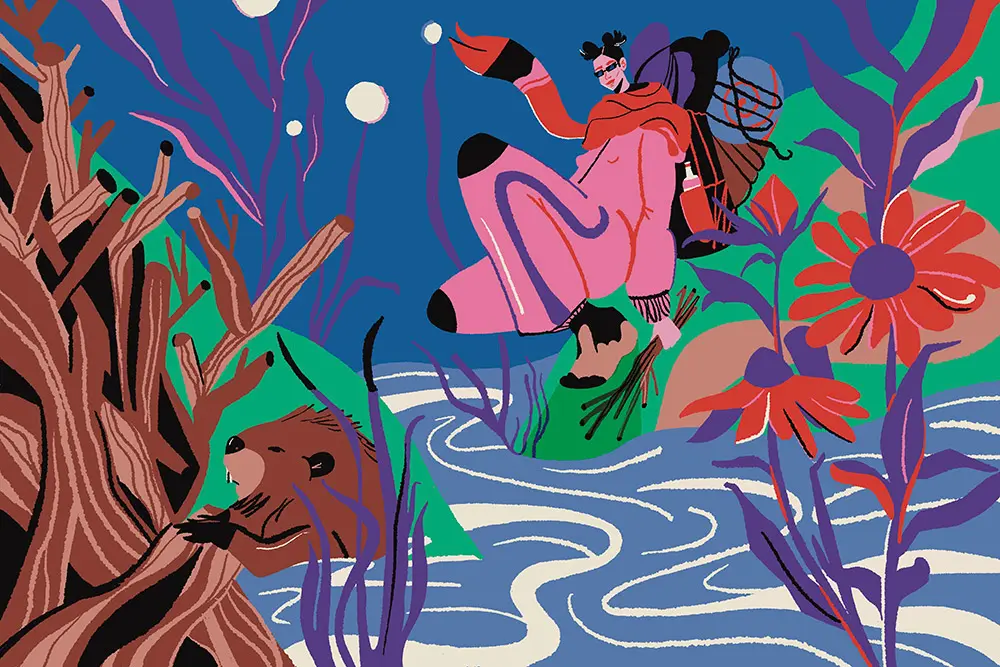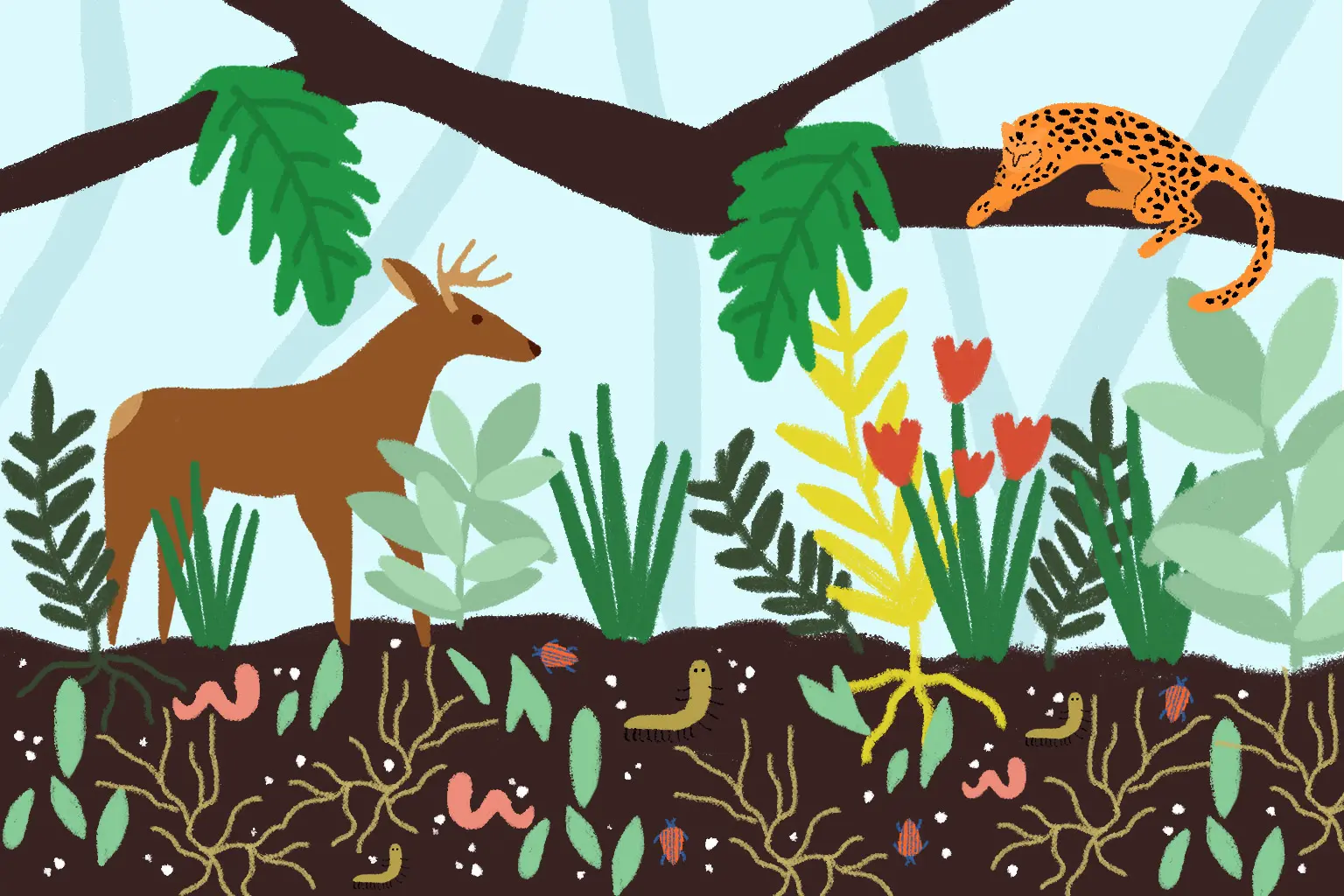Climate resilience as Good Fire
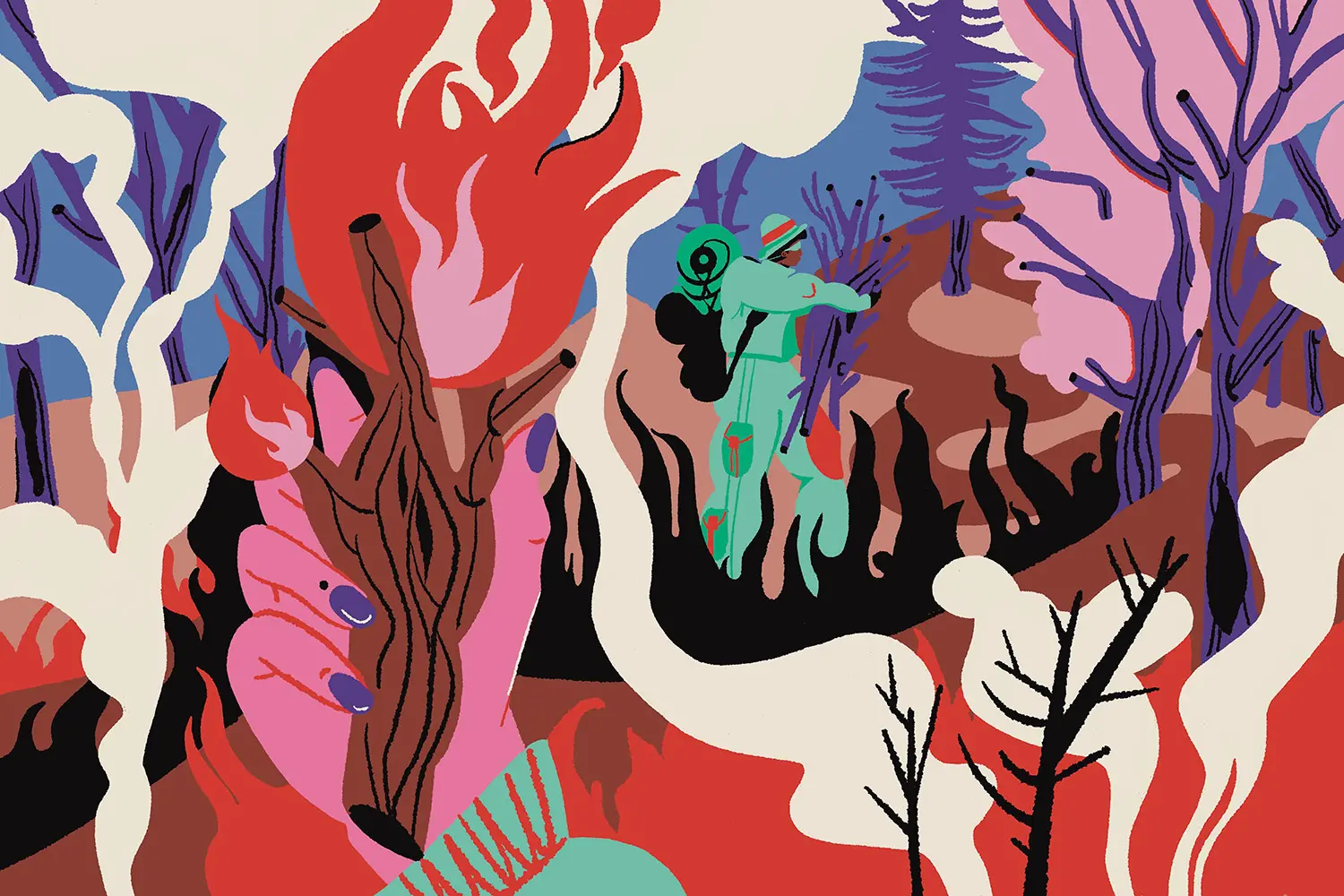
What Is Good Fire?
The sacred, ancestral practice of intentionally putting low- and moderate-intensity fire on the land. Good fire encompasses controlled, prescribed, and cultural fire.
When wielded with understanding, fire is restorative; when misunderstood and misapplied, fire is monstrous. Chelsea Steinauer-Scudder, writer and editor (source)
Some additional context: For thousands of years, cultural fire and prescribed burns, also known as “good fire,” have been implemented strategically by Indigenous peoples to maintain healthy, productive, and balanced ecosystems. The low- and moderate-intensity fire clears fuel to minimize the danger of high-intensity fires, allows medicine plants and traditional food sources to thrive, purifies waterways, and supports the lives of countless more-than-human beings. Cultural fire is a sacred practice. For the past century or so, however, the US federal fire policy has hinged upon a strategy of fire suppression, designed in part to protect commercial timber supplies. The fire suppression regime has been violently enforced, and cultural fire and prescribed burns have been restricted.
Continue readingThe non-Native people who came here did not understand that fire is meant to be part of the ecosystem, that as humans we’re also meant to be part of that system, and that we all must work together to keep it physically and spiritually in balance. They were afraid of fire, so they went to war on fire. Margo Robbins, Yurok tribal member, basket weaver, and good fire practitioner and advocate (source: Climate Resilience book)
Today Indigenous peoples still face persecution and penalty for traditional burning practices, even upon reservations. But as wildfires rage through overstocked forests, the need for prescribed burns is becoming more widely understood. In 2012, after five years of research, the Jemez Fire and Humans in Resilience Ecosystems project concluded that “living without smoke and fire is simply not an option,” particularly as temperatures increase and rainfall becomes more infrequent and extreme. Continuing to safely reside in fire-dependent ecosystems will require folks to embrace prescribed fire as a necessary, beneficial medicine and a disaster-prevention strategy. Restoring balance in fire-dependent ecosystems also means respecting and centering the Indigenous science and forest stewardship that prevented dangerous wildfires for millennia.
Continue readingWhy it’s a climate resilience powerhouse:
Minimizing destructive, high-intensity wildfires
Despite what Smokey Bear may have led you to believe, effective fire management strategies embrace rather than suppress forest fires. Regularly putting low- and moderate-intensity fire on the land keeps mature trees intact but clears out the forest’s understory, including shrubs, saplings, woody debris, and dead plants that exist between the canopy and forest floor. This practice significantly reduces the fuel load of the forest and decreases the likelihood of an unintentional fire reaching the treetops and spreading across the forest canopy. Controlled burns can also be utilized strategically to create protective buffers around homes, towns, and other important structures, so if unintentional fires sweep through an area where people reside, there’s minimal fuel for the fire and the spread of flames should stop or slow before reaching structures and the humans and/or animals inside.
Continue readingThere’s good fire and bad fire. And the good fire prevents the bad. Margo Robbins, Yurok tribal member, basket weaver, and good fire practitioner and advocate (source)
Restoring ecosystem balance
As Mukta Patil writes in her 2021 essay “Living with Fire,” “Fire is a sophisticated tool that can reorganize a landscape in a multitude of ways.” Indeed, the benefits of fire to an ecosystem’s health and wellbeing are profound and wide-reaching:
- Controlled burns leave the forest floor covered in a thin layer of biochar, which helps to purify water before it reaches nearby streams, creeks and rivers. Biochar also improves the porosity and moisture retention of soil so that it acts like a sponge, preventing floods amidst heavy rainfall and keeping plants hydrated amidst drought.
- Fire returns nutrients from decaying organic material more quickly into the soil, which increases soil fertility and supports new plant growth.
- Smoke from controlled burns can provide strategically-timed shade over rivers so that water temperatures cool down for fish making their annual spawning runs.
- Fires enhance streamflow. Bill Tripp, the Director of the Karuk Tribe’s Eco-Cultural Revitalization program, helps to illuminate the correlation between fire, water flow, and river health in an interview with Bioneers: “[Fire] scorches off all the small plants that are growing up and that are using surface water. It creates smoke that can reduce the solar insulation that heats the water and the river, and it creates particulates that cloud up the holes in the leaves and needles that trees use to breathe. It reduces their efficiency and evapotranspiration. They still pump water up to the surface level of soil at night, as trees normally do so they have something to use during the day. So, they’ll pull the water up at night and distribute it into the surface soils. But during the day if there’s smoke, evaporation and transpiration are reduced. When that happens, more water stays in the soil that can then runoff into the streams. That can increase the flow in the streams. The increased flow combined with the reduced water temperature can be enough to move your main river temperatures from lethal to stressful, and even to the point of being safe for fish to enter the stream.”
- When understories are cleared and forests are thinned, grazing animals like deer and elk have enough space and access to nutrient-rich forage to come back and graze in the area.
- Good fire can help to reduce pest populations and invasive species that aren’t fire-adapted.
- Meanwhile, fire enables seed germination for several plant species that are fire-dependent, like pine trees, certain types of lilies, and more.
And on and on!
Continue readingThis is how we’re supposed to care for Mother Earth. Put fire back on the ground, bring our home back into balance. Talon Davis, member of the Yurok good fire crew (source)
Revitalizing culturally important food, medicine, and traditions
Cultural fire enhances the health and availability of many sources of food and medicine as well as culturally important plants. For instance, for the Yurok, Hoopa, and Karuk in the mid-Klamath region of Northern California, fire has historically enriched the region with berries, herbs, deer and elk, tan oak acorns, salmon, mushrooms, and more, as well as fire-dependent, culturally important plants like bear grass and hazel sticks, which are used to make baskets to gather food and medicine, trap eels, cradle babies, and more (fire spurs the growth of soft, pliable bear grass and straight, slender sticks in hazelnut shrubs).
When fire was removed from our ecosystem, our ability to carry on the tradition of basket weaving grew slimmer and slimmer until it was at risk of getting lost. Margo Robbins, Yurok tribal member, basket weaver, and good fire practitioner and advocate (source: Climate Resilience book)
Without sovereignty over fire management practices, Indigenous peoples are robbed of their food, healing, and cultural sovereignty, and millennia-old traditions and knowledge are put at risk of getting lost. Therefore, for many Indigenous peoples, fire is an integral piece of efforts to restore community health and wellbeing and preserve cultural traditions and ancestral wisdom.
People have become disconnected with the land and fire. And they’ve forgotten, or perhaps because there has been a generational assault on who we are, perhaps they never knew who we [were] and who we’re meant to be. Fire has the ability to reestablish that connection. Margo Robbins (source)
The nuance / caveats:
The reintroduction of good fire is not without its challenges. As the climate crisis worsens, it becomes harder and harder to safely conduct controlled burns. Additionally, as humans move further into wildland areas, it becomes more challenging to burn at the scale necessary to effectively reduce the risk of high-intensity fire. However, as Bill Tripp, the director of Karuk Tribe Department of Natural Resources, says, “We’re not going to be able to solve this problem overnight. This is going to be a 100- to 200-year process. But we have to start.” And many of us will need to pitch in.
Continue readingSpotlights
Prescribed Fire Training Exchanges (TREX) is an experiential training program developed to bolster local capacity, knowledge, skills, and relationships in order to safely conduct more controlled burns. The program, which The Nature Conservancy operates in partnership with dozens of local groups on the ground and with financial support from the USDA Forest Service and the U.S. Department of the Interior, trains hundreds of “fire-lighters” each year, some of whom come to the program as seasoned fire practitioners and others with little to no fire experience. While the primary objective of TREX is to teach folks how to utilize good fire in order to scale up regional efforts, each TREX event is designed to meet the community’s ecological, cultural, and safety needs, whether that means clearing out fuel loads, opening up grasslands to welcome back grazers, or stimulating new growth of culturally important plants.
If you’re interested in participating in a TREX event, find upcoming events here.
Continue reading about Good Fire
Cultural Fire Management Council (CFMC) is a community-based nonprofit taking action to bring good fire back to ancestral Yurok lands. CMFC is working hard to revive and preserve cultural fire practices and fire-dependent traditions, restore balance in regional ecosystems, and protect residents from destructive wildfires. They’re also striving to shift the larger fire paradigm by strengthening state and federal support of cultural burning, transferring knowledge across generations, and communicating the importance of good fire to the public. CFMC conducts instructive, cultural, and preventative burns and also hosts biannual TREX events where fire practitioners and Yurok tribe members can learn and burn together.
You can support CFMC by making a regular monetary donation.
Continue reading about Good FireIndigenous Peoples Burning Network (IPBN) is a support network led by Indigenous elders, culture keepers, and practitioners who are revitalizing their traditional fire cultures in a contemporary context. Their goal is to assist Indigenous nations across the so-called United States and beyond to reclaim their traditional fire regimes. They offer strategic planning, learning exchanges, Indigenous fire training, and cross-cultural facilitation. The network emerged on Yurok, Hoopa, and Karuk ancestral lands in Northern California but has since grown to include multiple pueblos of Northern New Mexico, the Alabama-Coushatta Tribe of Texas, the Leech Lake Band of Ojibwe in Minnesota, the Klamath tribes in Oregon, and more. Similar to TREX, IPBN is administered by The Nature Conservancy with financial support from the USDA Forest Service and agencies of the Department of the Interior.
Continue reading about Good Fire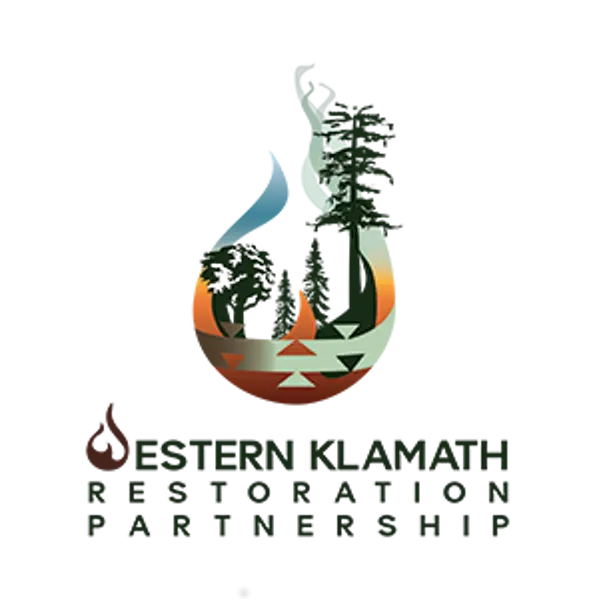
Western Klamath Restoration Partnership (WKRP) is a collaborative land and fire management effort between the Karuk Tribe, U.S. Forest Service agencies, and several community-based organizations in the Western Klamath Mountains of Northern California, like the Mid Klamath Watershed Council, Salmon River Restoration Council, and more. Their primary aim is to come together to utilize Traditional Ecological Knowledge to restore ecosystem balance, cultural adn economic vitality, and fire resilience to the region, which has been repeatedly decimated by out-of-control, high-intensity wildfires in recent years. While the WKRP is still not able to burn at the scale that they want or need to, they are slowly but surely building trust and a shared vision across differences and beginning to transcend the barriers to good fire that many of their partner groups have experienced when working alone.
You can support WKRP by making a regular monetary donation to the Karuk Tribe Department of Natural Resource’s Endowment for Eco-Cultural Revitalization.
Continue reading about Good FireResearch + reflection prompts:
- Who are the original stewards of your watershed, and what did their relationship to fire look like prior to settler colonization? What does their relationship to fire look like today?
- How do federal and state policies and budget allocations support or restrict fire suppression versus prescribed fire and fire-prevention efforts in your region today?
- Which Indigenous-led organizations, advocates, and practitioners are leading efforts to restore good fire in your region today?
- What have you been taught about the relationship between ecosystem health and human presence? How might you reframe or reclaim narratives about human and larger ecosystem interdependence with what you now understand to be true?
How to get engaged:
Political action
If you have access to time: With a few minutes to spare, contact your local, state, and federal representatives via email, letter, or phone to call for Indigenous fire sovereignty and to ask that resources be invested in an expansion of prescribed burns and prescribed fire training. Here is a template to get started. With a few hours to spare, attend town hall meetings or office hours to ask what your representative is doing to support good fire efforts.
Fire training
If you have access to land or a passion for fire: Participate in a Prescribed Fire Training Exchange workshop to learn how to safely put fire on the ground in your yard or larger community. Find an upcoming training here.
Financial Support
If you have access to financial resources: Support the work of organizations like those spotlighted that are conducting cultural and prescribed burns, advocating for law reform to allow Indigenous fire sovereignty, and leading prescribed fire trainings or otherwise educating folks about good fire.
A smattering of resources for continued learning + action:
Short Reads
- “Wildfires Are Essential: The Forest Service Embraces a Tribal Tradition” by Nathan Gilles in Yes Magazine
- “How Indigenous Burning Practices Could Prevent Massive Wildfires” by Ezra David Romero, Bill Tripp, and Don Hankins in Science Friday
- “Fire as Medicine: Learning from American Fire Stewardship” by Jane Palmer in EOS
- “Quiet Fire: Indigenous tribes in California and other parts of the U.S. have been rekindling the ancient art of controlled burning” in Nature Conservancy Magazine
- “Firebreak” by Chelsea Steinauer-Scudder in Emergence Magazine
- “Good Fire: Indigenous Cultural Burns Renew Life” by Arty Mangan with Bill Tripp in Bioneers
- “For tribes, ‘good fire’ a key to restoring nature and people” by John Flesher in Phys.org
- “‘There’s good fire and bad fire.’ An Indigenous practice may be key to preventing wildfires” by Charles C. Mann in National Geographic
- “‘Fire is medicine’: How Indigenous practices could help curb wildfires by Casey Kuhn in PBS News Hour
- “Native Americans Used Fire to Protect and Cultivate Land” by Dave Roos in History.com
- “Fire Training Exchanges Expand Controlled Burns” in The Nature Conservancy
- “Living with Fire” by Mukta Patil in Bay Nature Magazine
Long Reads
- Fire Country: How Indigenous Fire Management Could Help Save Australia by Victor Steffensen
Watch
- Tending the Wild; Cultural Burning: A clip from a six-part multimedia series and documentary produced by KCET and the Autry Museum in 2017 to shine a light on the environmental knowledge of Indigenous peoples across California by exploring how they actively shaped and tended the land for millenia.
- ★ Inhabitants: An Indigenous Perspective: A 2015 feature documentary that follows five Native American Tribes across deserts, coastlines, forests, and prairies as they restore their traditional land management practices.
- Wilder Than Wild: A 2018 documentary that reveals how fire suppression and climate change have exposed our forests and wildland-urban landscapes to large, high intensity fires, and explores strategies to mitigate the impact of these fires.
Listen
Engage More Deeply
- Learn how to safely put good fire on the ground! Find an upcoming TREX training here.
